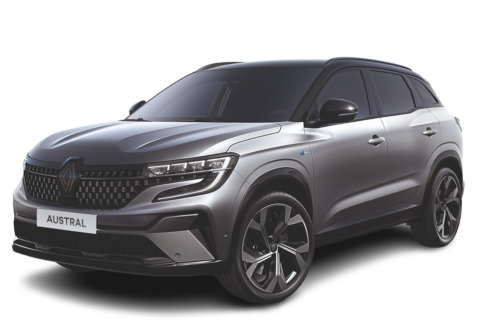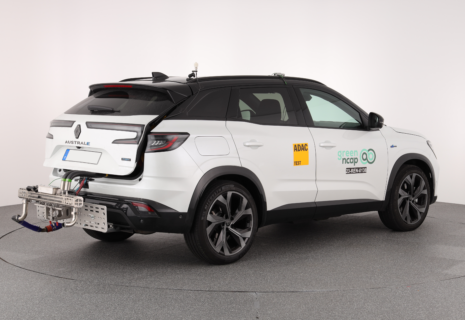Renault Austral E-Tech Full Hybrid 200 hybrid FWD automatic
2023
52%
6.6
10
Clean Air Index
5.3
10
Energy Efficiency Index
3.9
10
Greenhouse Gas Index
| Laboratory Tests | NMHC | NOX | NH3 | CO | PN | |
|---|---|---|---|---|---|---|
| 5.510 | Cold Test | |||||
| 7.710 | Warm Test | |||||
| 6.010 | Highway | |||||
| 5.210 | Cold Ambient Test | |||||
| Road Test | ||||||
| 7.210 | On-Road Drive | |||||
| 2.95 | On-Road Short Trip | |||||
| 6.38 | On-Road Heavy Load | |||||
| 3.95 | On-Road Light Load | |||||
| 2.02 | Congestion | |||||
| Laboratory Tests | Energy | |||
|---|---|---|---|---|
| 7.210 | Cold Test | |||
| 6.810 | Warm Test | |||
| 3.810 | Highway | |||
| 3.610 | Cold Ambient Test | |||
| Consumption | Driving Range | |||
| Average | 5.6l100 km | 1,022km | ||
| Worst-Case | 7.5l100 km | 735km | ||
| Greenhouse Gases | CO2 | N2O | CH4 | |
|---|---|---|---|---|
| 6.410 | Cold Test | |||
| 5.910 | Warm Test | |||
| 1.910 | Highway | |||
| 1.710 | Cold Ambient Test |
Specifications
- Tested Car VF1RHN00069925XXXX
- Publication Date 04 2023
- Vehicle Class Large MPV
- Emissions Class Euro 6d AP
- Tyres 235/45 R20
- Mass 1,601 kg
- Engine Size 1,199 cc
- Power/Torque 147 kW/205 Nm
- Declared CO2 106 g/km
- Declared Battery Capacity 1.75 kWh
- Declared Consumption 4.7 l/100 km
- Heating Concept Waste heat + PTC







































































































































Our verdict
August 2023: The result of this car been updated. Previously reported Ammonia (NH3) values were incorrect owing to a technical error with the equipment at the test laboratory and a correction has been applied.
The Renault Austral E-Tech full hybrid 200 is a SUV with a turbo-charged 1.2 litre petrol engine and a kerb weight of 1.600 kg. The car easily classifies for Green NCAP's additional robustness testing. The 400 V hybrid system is major help in reducing fuel consumption, primarily in tests where speeds are below highway levels. In the -7°C Cold Ambient Test, the car needs significantly more energy than in the 23°C WLTC+ Lab Tests. Around 5 l/100 km can be expected in a standard real-world On-Road Drive. Pollutant emissions are well and robustly controlled, but additional effort to master the challenges of cold start conditions would pay dividends in an even higher Clean Air score. Due to its generally reasonable fuel consumption figures, the vehicle scores better in the Greenhouse Gas Index than many other similar sized SUVs without hybridisation. With an Average Score of 52%%, the Austral receives well deserved 3 Green stars.